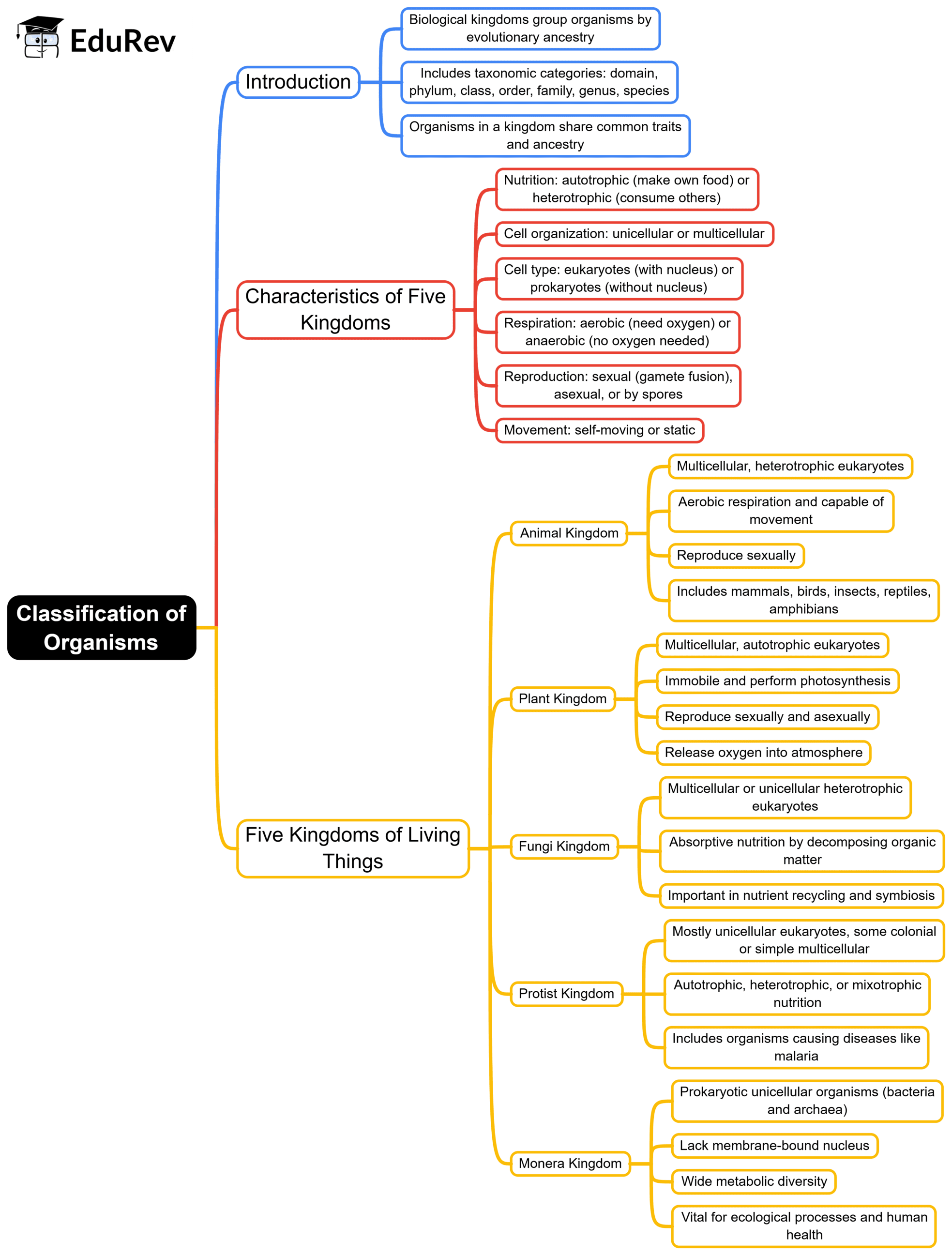NEET Exam > NEET Notes > Biology Class 11 > Mind Map: Classification of Organism
Mind Map: Classification of Organism | Biology Class 11 - NEET PDF Download

The document Mind Map: Classification of Organism | Biology Class 11 - NEET is a part of the NEET Course Biology Class 11.
All you need of NEET at this link: NEET
|
169 videos|400 docs|136 tests
|
FAQs on Mind Map: Classification of Organism - Biology Class 11 - NEET
| 1. What is biological classification and why is it important in biology? |  |
Ans.Biological classification, also known as taxonomy, is the systematic categorization of living organisms into groups based on shared characteristics. It is important because it helps scientists organize and identify species, understand relationships among organisms, and facilitate communication about biodiversity. By classifying organisms, we can study their evolution, ecology, and biology more effectively.
| 2. What are the main ranks in the hierarchy of biological classification? |  |
Ans.The main ranks in the hierarchy of biological classification include Domain, Kingdom, Phylum, Class, Order, Family, Genus, and Species. This hierarchical structure allows for a systematic approach to classify and name organisms, starting from the broadest category (Domain) to the most specific (Species), which is crucial for understanding the diversity of life.
| 3. Who is considered the father of modern taxonomy and what was his contribution? |  |
Ans.Carl Linnaeus is considered the father of modern taxonomy. He developed the binomial nomenclature system, which assigns each species a two-part Latin name consisting of the genus name and the species identifier. This system, introduced in his work "Systema Naturae," provides a standardized way to name and categorize living organisms, greatly influencing the field of biology.
| 4. What is the significance of the binomial nomenclature system in biological classification? |  |
Ans.Binomial nomenclature is significant because it provides a universally accepted method for naming species, reducing confusion caused by common names. Each organism is given a unique two-part name: the first part identifies the genus, and the second identifies the species. This system allows scientists from different regions and languages to communicate clearly about specific organisms.
| 5. How do phylogenetic trees aid in understanding biological classification? |  |
Ans.Phylogenetic trees are diagrams that represent the evolutionary relationships among various species. They illustrate how species are related through common ancestors, providing insight into the evolutionary history of life. By analyzing these trees, scientists can better understand the similarities and differences between organisms, aiding in the classification process and helping to trace the evolution of traits across different taxa.
Related Searches

















